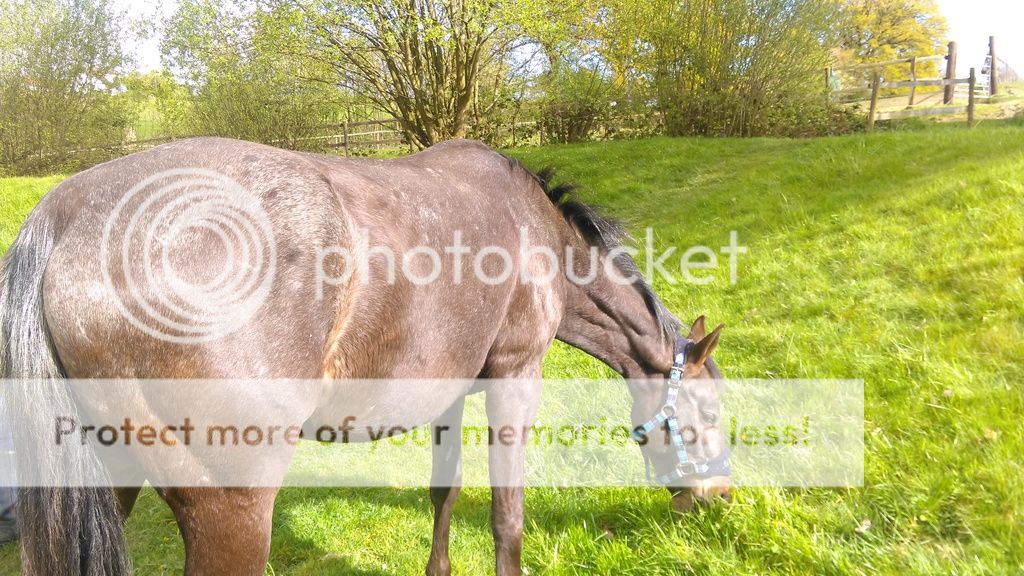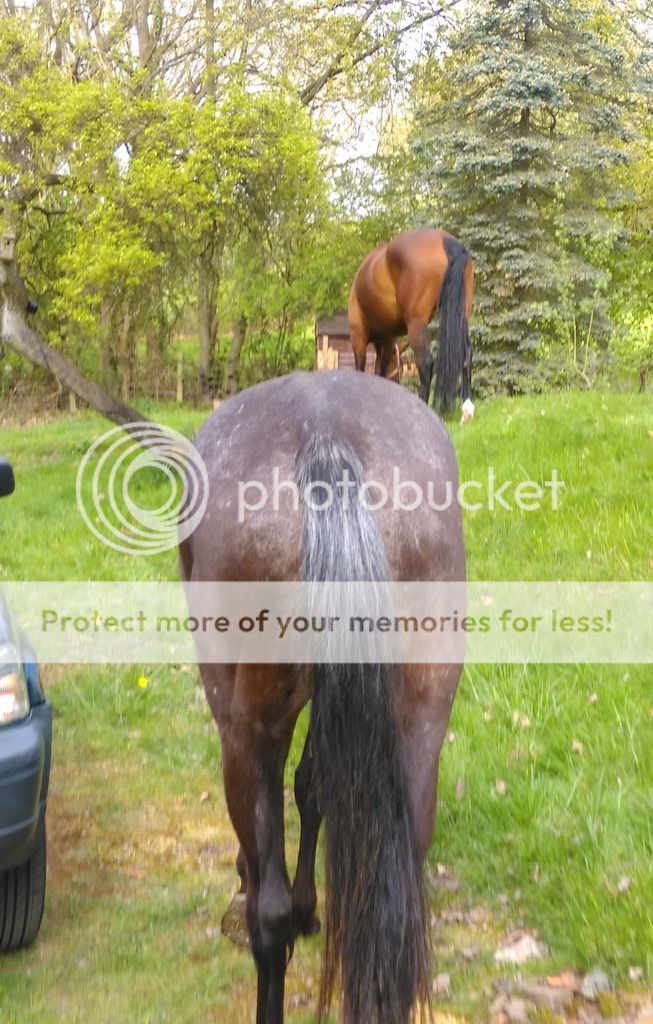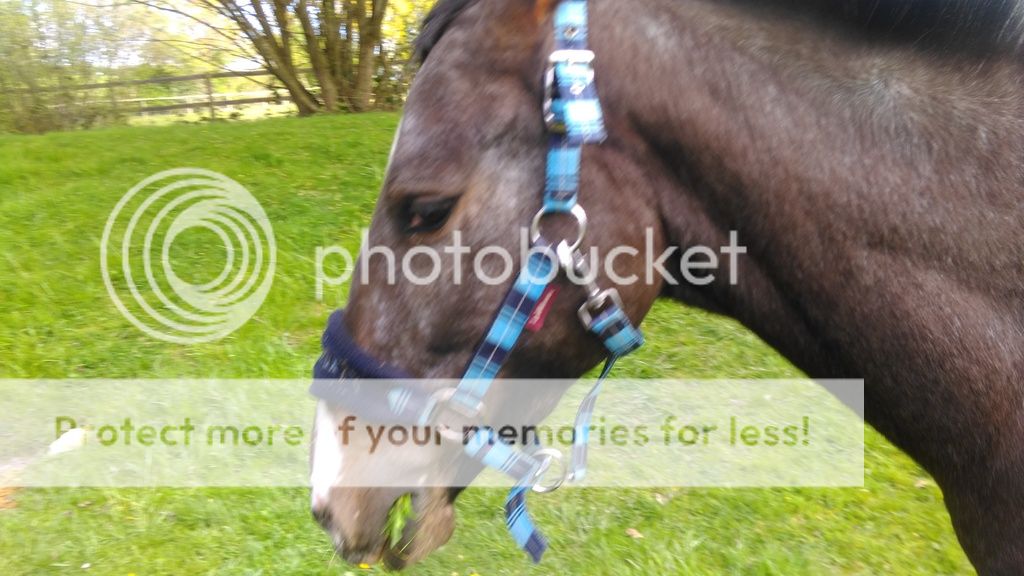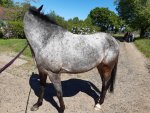DabDab
Ah mud, splendid
So, I've never owned a colour changing horse before that wasn't just a straight forward grey. This is my micro mare (if I've managed to make the pictures work anyway), who breeding wise is Knabstrupper x TB, and a couple of months ago was very dark bay with just a few flecks of white through her coat and one white sock. Dad is a few spot (from birth), and mum is bay.
She now has white in her tail, some blobs of white in her body, some areas that look like they are greying, cream coloured nether regions, and dark (almost black) spots showing through. She's also complete with splodgy muzzle, gums etc., human eye and candy stripe hooves. She's rising 3
Would love to hear people's opinions on how she'll end up. Is all this change just due to the spotty gene?



She now has white in her tail, some blobs of white in her body, some areas that look like they are greying, cream coloured nether regions, and dark (almost black) spots showing through. She's also complete with splodgy muzzle, gums etc., human eye and candy stripe hooves. She's rising 3
Would love to hear people's opinions on how she'll end up. Is all this change just due to the spotty gene?



Last edited:





